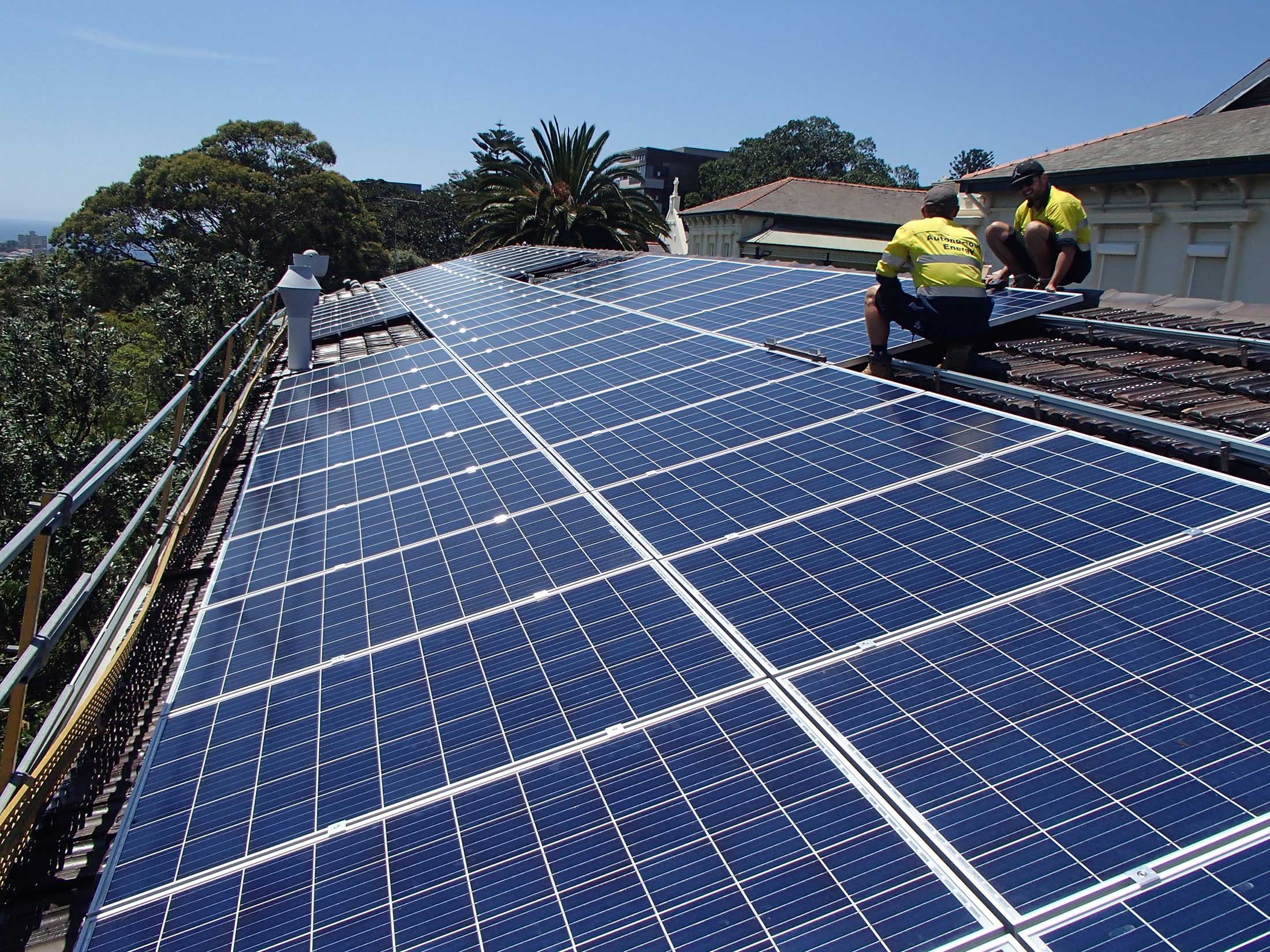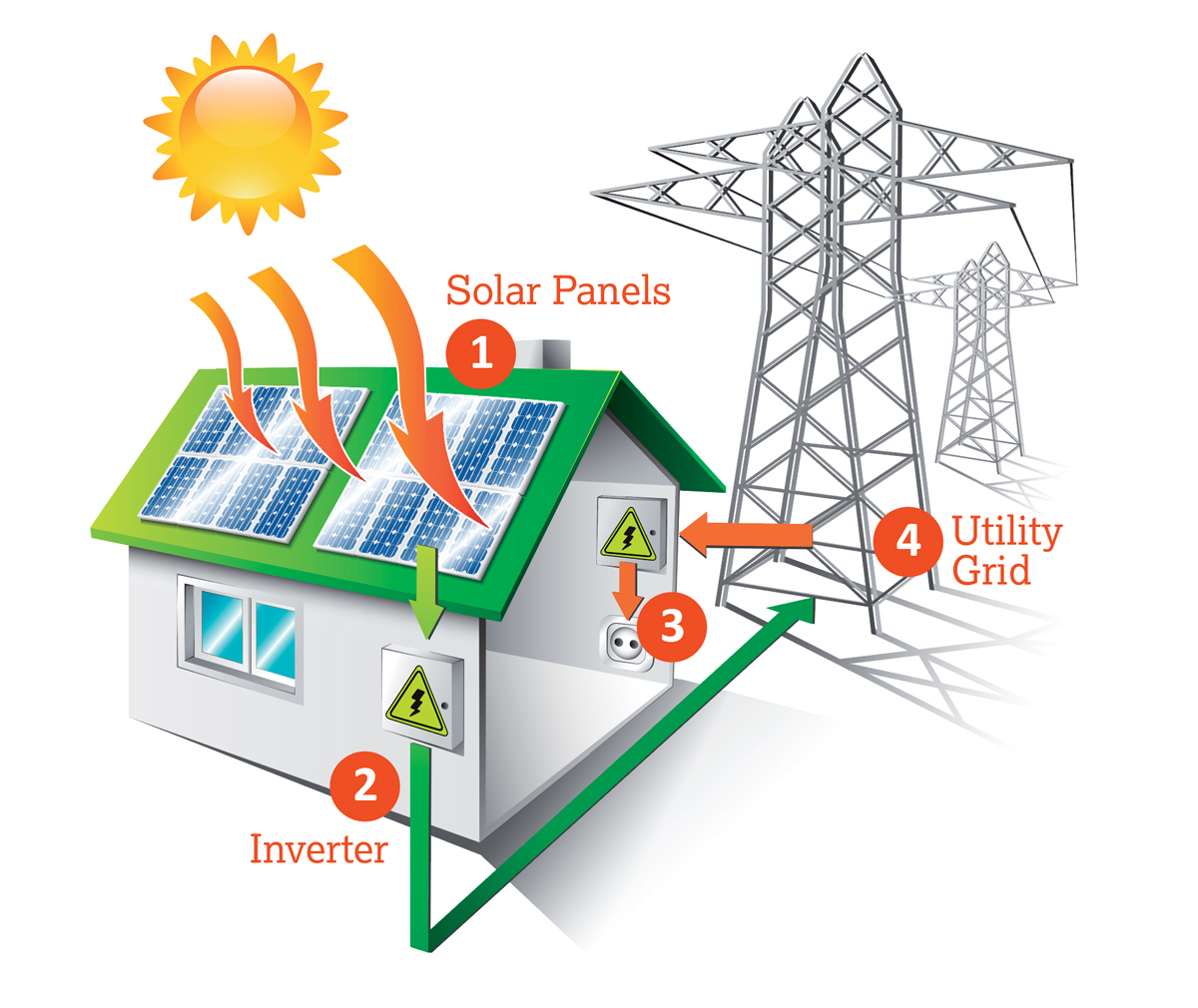The solar power system on your rooftop uses renewable energy from the sun to create clean green electricity to be used on-site.

FAQs
How does solar power work?

- Energy from sunlight is converted into direct current (DC) electricity via an array of solar panels.
- An inverter converts the direct current to alternating current (AC), the same as mains supply electricity.
- The electrical panel then sends the power to feed your school computers, lights and other equipment.
- The utility meter measures the energy you draw and feedback to the supply grid. During the day when the sun is shining, some of the power being used is coming from the solar power system. If you’re consuming more energy than your system is producing extra power will come from the grid.
Why solar for my school?
Schools are ideal sites for solar because they use energy during the day at the same time as when the solar system is working at its best. When you can use the power at the time that it’s created then it’s free!
Schools can use solar power directly to run computer equipment, lighting, sports facilities and air conditioning.
Switching to solar energy helps reduce our local environmental impact, and also helps schools cut energy expenses.
Plus there are educational benefits for students and the wider parent community, and PR opportunities to market your school as an environmental leader.
Why is now a good time to go solar?
It’s more affordable than ever. Solar power prices have decreased by 80% over the last 10 years, so there’s never been a better time to go solar. We know about all the government incentives and grants and have been successful in securing funding for a number of schools so they get their solar systems for free or at greatly reduced costs. This may change, so why not start your solar journey today!
Is my school suitable for solar?
Most schools are suitable for solar, often with large unshaded roofs and are using the power during the daytime. However there a number of things you need to consider at the start of the journey. These include heritage considerations, roof structure, roof replacement works, and other planned development works / projects (air con installation). For public schools, it is recommended you talk to the Asset Managers to see if solar is a possible consideration as they own the buildings.
What happens on cloudy days, weekends and school holidays?
With grid connect solar systems in schools, you are still also connected to the mains power supply. So any shortfall in electricity production on less-sunny days will come from your mains supply automatically. On weekends or holidays when the school usage is low, the system exports the power back into the grid and earns money. Easy!
Is much maintenance involved?
There is little or no maintenance required and electronic components such as the inverter are totally maintenance free. We just recommend an annual check to ensure things are in working order.
How can I go solar at home?
Contact your local Council to see if they offer any support to their residents to go solar powered.
